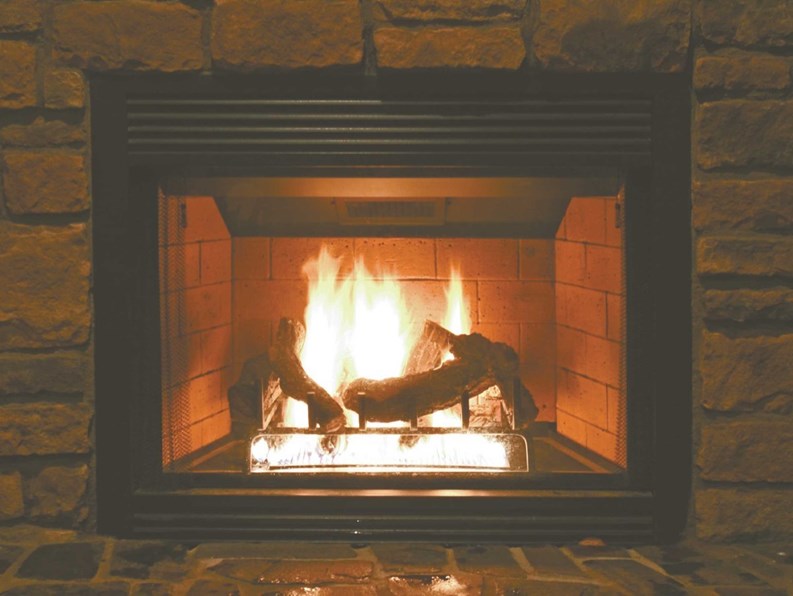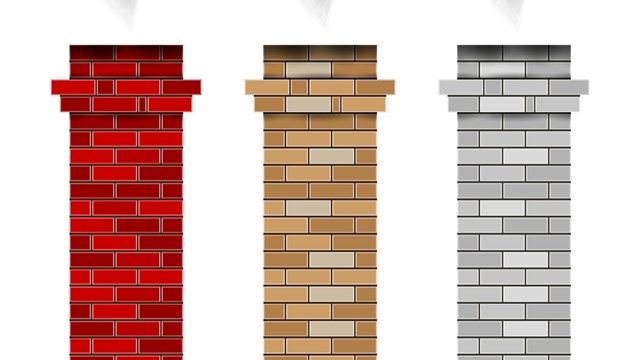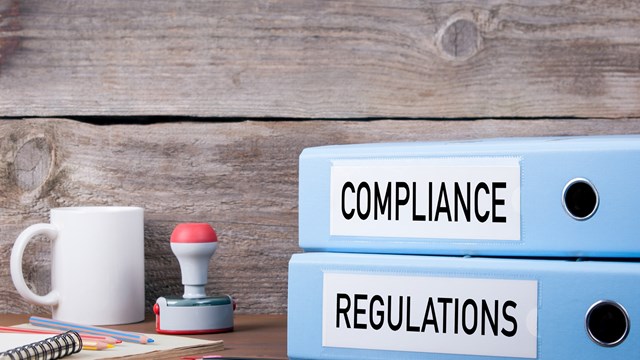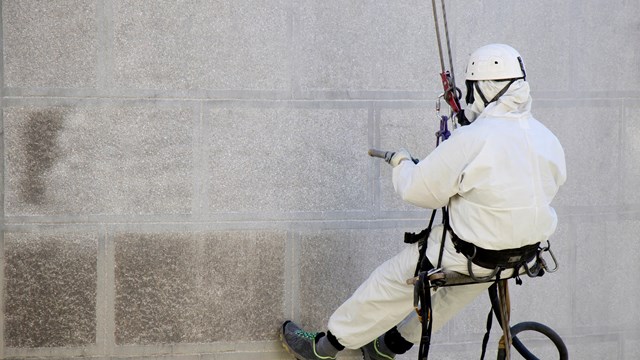Even cavemen knew that fire was dangerous—and they lived in flame-proof caves. But here in the 21st century, people blithely build roaring fires right in the middle of their furnished, wood-filled, carpeted, upholstered and bookcase-jammed condominiums. And they want someone to tell them it’s safe.
According to Ashley Eldridge, director of education for the Chimney Safety Institute of America (CSIA), the issue of safety and maintenance is particularly important in multifamily buildings, not only because of how those fireplaces and flues are built, but because of the close proximity of families and individuals to their neighbors. A fire can spread quickly in a co-op or condo, especially in older, converted buildings that may not have firewalls.
It’s a bit shocking, then, that regular fireplace maintenance is handled in various informal ways by buildings and their managers.There really is no universal standard, though members of the chimney sweeping industry are unanimous in their message: fireplaces are wonderful amenities in any home, but fireplace and chimney maintenance is crucial for the safety and health of building residents and the preservation of their property.
Yearly Inspections
According to the CSIA, every fireplace and flue should have what's referred to as a Level 1 visual inspection yearly. “It’s inappropriate to assume that if it wasn’t used it doesn’t need to be inspected,” Eldridge says. It’s not just creosote build-up that is dangerous; paper and blown-in litter can pose a threat, along with birds' nests, feathers, and other bits of debris. A lightning strike can also cause damage that cannot be determined without an inspection.
And the annual inspection guideline even applies to fireplaces that have never even been used, or that get used just a few times a year. “In many cases, the fireplace may get used at Thanksgiving, Christmas, and New Year's and little else,” she says. “Or you may have a consumer who really enjoys their fireplace and lights it every evening when they get home from work. Those two are going to collect [buildup] vary differently. And each fireplace operates differently; based on the height of the chimney, the size of the flue, the type of the fuel.” Regardless, says Eldridge.
The type of fireplace unit depends on when the home or building was built or last renovated, says Brian Kendall of Metropolitan Chimney Service Inc. in Brooklyn. “Older homes and buildings tend to be brick and mortar construction while newer buildings are more likely to have prefabricated fireplaces. Large multifamily buildings like co-ops in the city can have many fireplaces that are stacked on top of each other with many flues in a single chimney—I've seen as many as 30,” Kendall says. “With multiple flues, it's important to make sure that all are serviced regularly. It's not just one unit or apartment that would be affected by a problem in the chimney.”
When warm flue gas hits cold surfaces—such as the inside of a chimney flue—condensation results. If condensation is accompanied by burning unseasoned “green” wood, dense creosote—called “third-degree”builds up. The stuff has the consistency of taffy and clings to the inside of the flue, providing the perfect fuel for a chimney fire. “Creosote is very flammable,” says Kendall, “and it coats the entire length of the flue. In the event of a chimney fire, you should call the fire department immediately, inform all occupants of the property of the fire and leave the building. If there are glass doors on the fireplace and you can safely close them, this can help to choke the fire of oxygen that it need to continue burning,” he says.
Chimney Check-up
Most fire and building codes state that all chimneys and vents should be inspected and cleaned annually. According to the professionals, inspections can take anywhere from an hour to three hours, depending on the complexity, age, and accessibility of the structure, and can cost from $65 to upwards of $300 per fireplace. During a professional fireplace/chimney inspection, says Kendall, “We're looking for any potential fire hazards, and at the condition of the flue, firebox and smoke chamber.”
According to Kendall, the inspector will first take a look at the face of the fireplace to determine if there are any combustible materials such as drapes, rugs, or furniture that could catch fire if an errant spark happens to jump out of the fireplace.
“Then, inside the fireplace,” he says, “I will check that there is a screen to stop sparks from entering the room, a suitable grate for the fire wood, and a properly opening damper. I will also check out the brick work and mortar joints, and look for any cracks or loose mortar.”
After the firebox, Kendall says he checks out the smoke chamber and the flue, which gives an idea of how dirty the chimney is and whether it has a liner or not. Next, the inspector moves to the roof. “There, I'm looking for loose bricks, missing or deteriorated mortar joints, cracked or damaged cement crown, and flashing where the chimney meets the roof,” says Kendall. “We will also check that there is a chimney cap. If so, we'll remove it to look down the chimney to see the condition of the liner and check for any obstructions.”
Many sweeps also insert a camera into the flue to determine creosote buildup as well as debris. Years ago, a buildup of a quarter-inch was considered dangerous, says Eldridge, but recently the tolerance has been changed to just an eighth of an inch. Creosote is acidic, and just that small amount can have an adverse effect on the life of a chimney.
With all these steps, it's vital to have a qualified, properly-trained professional doing your inspection, says Eldridge. “There may be inherent defects with the installation, and until someone who's knowledgeable about chimney construction has the opportunity to assess the actual physical structure, you really don't know; you're taking something of a risk. The whole concept behind our certification process was a means of enabling consumers to determine that somebody is capable and competent and that their advice will, in fact, be good. Other than the obvious technical issues associated with passing an examination, the CSIA certification includes an ethics agreement. So if we find that somebody is taking advantage of people or recommending inappropriate repairs, then they stand to lose that credential.”
Sometimes, a simple inspection is all that stands between a unit or building and disaster. Michael Panzarella, owner of Strictly Chimneys in Berlin, Connecticut, remembers a situation that could have been catastrophic, but for a routine call from a homeowner to clean the flue for a wood stove. When he arrived the next day, he discovered that the wood stove, still burning, was dangerously hot to the touch. When he went to the roof, the flue lining, normally orange, was white with heat, and flames were shooting into the air. Panzarella called the fire department. When they arrived, they found that the heat and flame had penetrated the walls, and charred the underside of the hardwood floors. The fire was contained, but “If he hadn’t called me, [the client] could have lost the house,” Panzarella says. As it was, valuable property was destroyed.
Making it Easier
While it's not really feasible for a unit owner to clean their own chimney, they can certainly maintain the fireplace itself—and they can make it easier for chimney care professionals to do their job by granting workers access to their unit. “It's not impossible to simply sweep the chimney and not have a look at the front of the fireplace,” says Eldridge, “but it's not really adequate.”
In fact, both Eldridge and Kendall say that most chimney sweeps prefer to have someone representing the condo or association with them, if only to get them access to the individual units.
“If you have a condo other multifamily building, typically the arrangement is made to address every unit,” says Kendall. “And access is often the biggest problem, so we encourage [clients] to have a representative of the apartment complex, the HOA or building engineer or maintenance person go with the service techs from one unit to the next. A large part of the expense is simply going there and getting on to the next job. So if we can go to one place and have multiple-day access, that can often allow us to reduce the price. That's what everybody's looking for. So it's for the service tech's benefit to have a representative of the building there, not only to provide access, but to make sure that people understand he wasn't just wandering around their apartment.”
Safety First
Fireplace technology has come a long way since communal pits in caves, but it's still fire, and it's still dangerous, so safety between inspections and cleanings is crucial.
The FDNY offers the following safety tips. Before using the fireplace for the first time in a season, make sure the flue is open. The flue is a trap door that keeps heat out in the summer and cool air from coming in when the fireplace is not in use. You can check it by looking up the chimney to see if you are able to see daylight. If there are any obstructions, remove them or have a qualified professional do so. If not removed, these obstructions will cause carbon monoxide to back up into your home. Carbon monoxide is a deadly, odorless and invisible gas. Artificial logs made from wax and sawdust should be used one at a time.
Also says the FDNY, pressure-treated wood should not be burned in stoves or fireplaces because it contains toxic chemicals that can make you sick. “Never leave a fireplace unattended. Chimneys and vents should be inspected and cleaned annually. Have chimneys inspected and cleaned when necessary by a professional chimney sweep. Creosote is an unavoidable product of wood-burning stoves and fireplaces. Creosote builds up in connectors and chimney flues and can cause a chimney fire. Don't burn newspapers or other trash in a fireplace because they burn too hot and can ignite a chimney fire.”
For example, some artificial logs now on the market claim to clean out creosote—the pros say that they can help, but they should not be used in lieu of regular visual inspections and cleanings.
The New York City building code also recommends some precautionary measures when taking fireplaces and fuel-burning wood stoves into account. Under Title 27 / Subchapter 14, Section §27-848.12, a smoke detecting device is required in the same room or adjacent room to where any fireplaces, fireplace stoves or room heaters are installed. Secondly, a Class A-rated fire extinguisher must be in the vicinity of the unit. The fireplace stove fuel door must be latched and the fireplace or wood stove must be equipped with a screen to minimize spark emission. Also floor protection around the unit is required for ash removal and fallout.
“One of the biggest mistakes that can be made is not having your chimney swept and inspected by a professional who knows what they are looking for,” says Kendall.
And Eldridge stresses that an artificial log can be just as dangerous as wood. They're meant to be used one-by-one—not piled up to simulate a “real” fire. A gas fireplace comes with the danger of carbon monoxide. Where you can immediately tell that there is a drafting problem with a wood burning fireplace, a problem with a gas fireplace is less obvious. If using gas I would always recommend multiple carbon monoxide detectors.”
For his part, Panzarella is a bit more forgiving of artificial logs, and says he has never seen a creosote buildup in a fireplace used only for artificial logs as great as buildups in fireplaces burning wood. “I’ve never seen a chimney get really nasty with artificial logs,” he says.
A crackling, fragrant fire is one of life's little pleasures as the weather gets cold and winter sets in. Fireplaces, whether gas or wood-fueled, are also major value-added amenities in co-op and condo units. With proper installation, care, and professional maintenance, they can function safely for generations to come.
Hannah Fons is the associate editor of The Cooperator. Additional reporting by David Chiu.







Comments
Leave a Comment